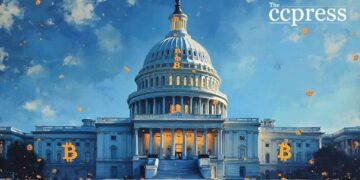- FDIC revises guidelines for crypto activities, changing banking sector landscape.
- Bitcoin projected to reach high values by 2028.
- Increased integration of crypto into traditional banking services.

Acting FDIC Chairman Travis Hill has revised guidelines, now permitting banks to engage in crypto-related activities as of March 28, 2025, reflecting a significant regulatory shift.
The FDIC’s move to allow banks in crypto activities indicates a broadening acceptance of digital assets, potentially affecting market strategies and investment attitudes.
The revised guidelines by the FDIC outline a shift from its earlier stance against banks’ participation in crypto activities. Travis Hill acknowledges the agency’s prior resistance, emphasizing an ongoing reevaluation of their approach. As Hill noted,
“The documents that we are releasing today show that requests [to pursue crypto- or blockchain-related activities] from banks were almost universally met with resistance [from the FDIC] … Looking forward, we are actively reevaluating our supervisory approach to crypto-related activities.”
This decision follows previous “pause letters” which deterred banks from engaging with digital assets.
Involving key figures like Bank of America CEO Brian Moynihan, who views crypto as another payment form, expands the potential for transactions. Caitlin Long notes the FDIC’s cautious stance on crypto deposits. Hill’s approach hints at future-friendly frameworks.
Regulatory changes are anticipated to impact financial markets significantly, with projections like Standard Chartered’s estimating Bitcoin’s rise to $500,000 by 2028. The market’s response to these new guidelines will shape future interactions with crypto technologies.
Such regulatory amendments suggest significant alterations in how banks integrate with digital currencies, influencing financial planning and consumer transactions. Banks engaging in crypto may face both opportunities and challenges as they adapt to these evolving regulations. Hill’s leadership is pivotal in steering this transformation.


























